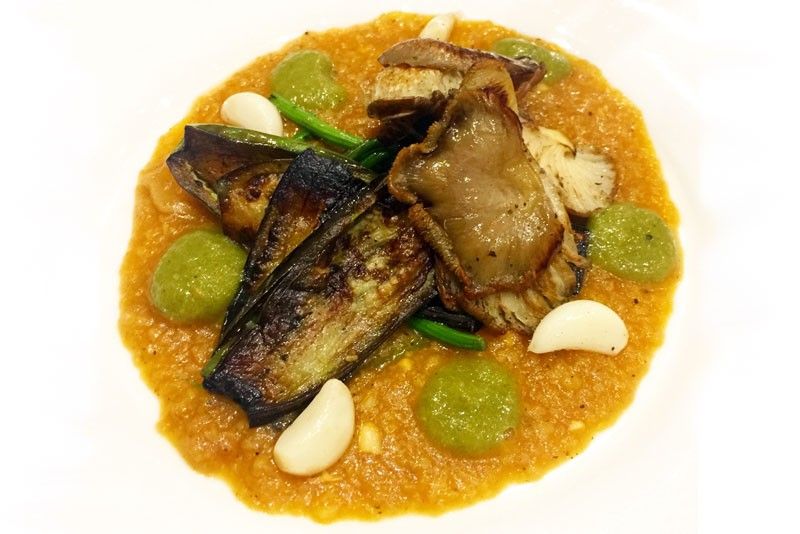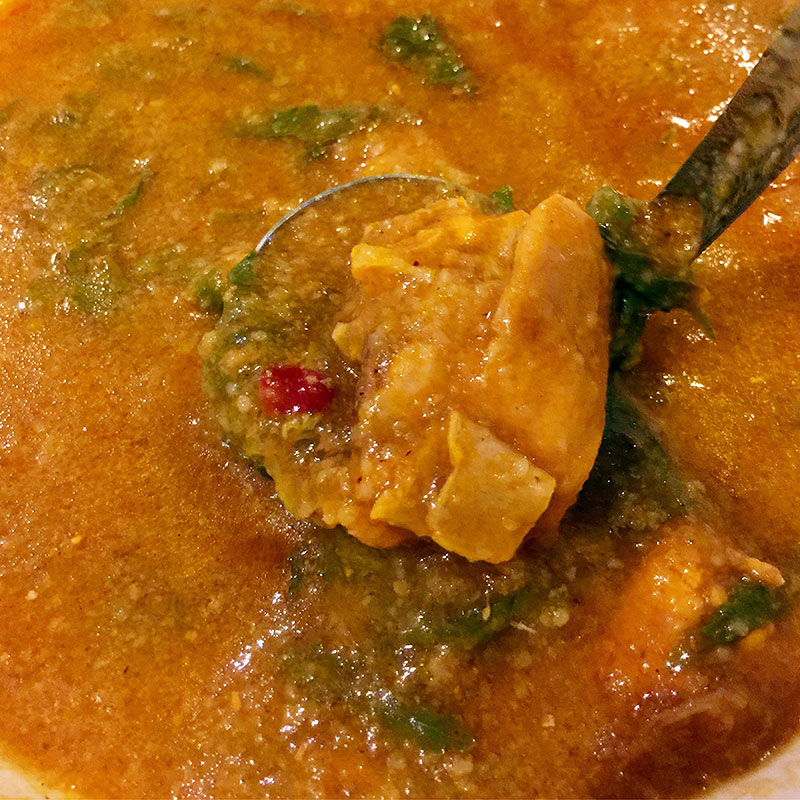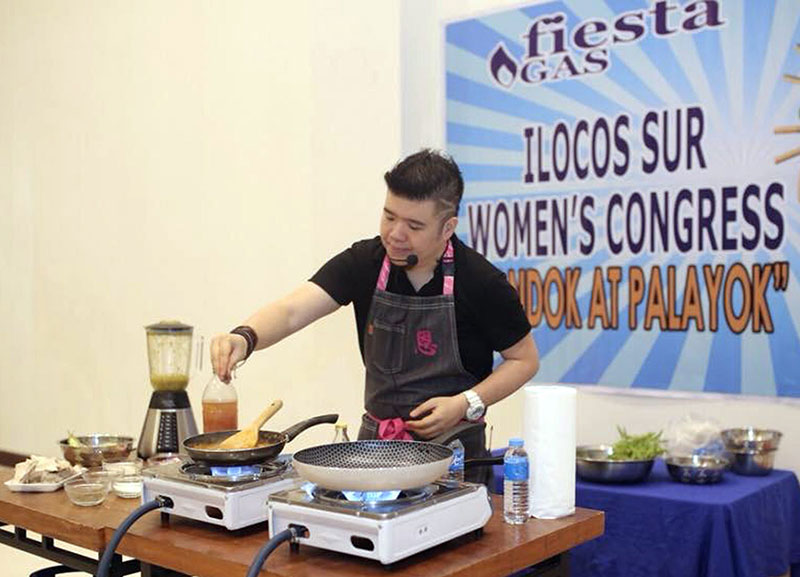Love letter to Vigan (and Vegans)


After a lovely time in Vigan a month ago, I knew I wanted to go back. Little did I know that my return was going to be this soon.
To celebrate Women’s Month, Ilocos Sur senior Provincial Board member Mika Mendoza set up the Ilocos Sur Women’s Congress, a series of activities and seminars for the women of the province. Remembering my promise to help her and the province any way I could, she invited me to do a cooking demo and one of several talks the participants could choose to attend.
Normally, when organizers ask me to do a cooking demo, they ask for the recipe I will be doing in advance so they can prepare the ingredients, but this time, I asked them to hold off. I wanted to keep in message with the empowerment theme of the women’s congress and I wanted my recipe to reflect that. I aimed to come up with a new recipe that showcased the history, culture and beauty of Ilocos Sur, something that celebrated the province.

The pasotes or ezpazote leaves are curiosly used mostly in Mexico and Ilocano cuisine only.
People often ask me how I come up with recipes. In my line of work, where I develop recipes for brands and for restaurants, you use as many techniques as you can. My favorite technique, though, is what I call the “pass through.” What I like to do is pass through a local market or grocery store, talk to people and draw inspiration from there.
Arriving in Vigan at around 4 p.m., I literally dropped my bag at the hotel and went straight to the market. I knew I wanted to celebrate garlic, one of Ilocos’ most beloved crops, so that was my first purchase. I snatched up some garlic chives (kutchay) as well, as it gives off a flavor distinct from the garlic bulbs.
Suddenly, my local driver Mang Nestor piped up and pointed to a bunch of leaves called pasotes. I had never seen these leaves before and, when I did, I was surprised by the flavor. It had hints of licorice, mint and coriander, and I knew I had found a local Ilocano ingredient I wanted to use. I quizzed Mang Nestor on how to use the pasotes leaves and he told me it’s only used in one Ilocano dish called Pipian. Mang Nestor proceeded to tell me the ingredients of the dish: chicken, crushed toasted rice, atsuete (achiote), kamias (balimbing) and pasotes.
Cooking it was simple, essentially stewing the ingredients together to make a dish that is almost a chicken porridge with some sour notes. Because it’s cheap and filling, it’s perfect, especially as a breakfast or a midmorning snack to power through long days at work. Something in me told me that I had found my inspiration, but in order to make my version and give the dish and Ilocano culture the proper respect, I needed to study further. I bought the crushed rice, the pasotes leaves and kamias, but I stopped there. I would buy more the next day, right before I did my cooking demo.
On the way home, Mang Nestor bought some local mushrooms and told me he was making a simple dinengdeng soup with them and local bagoong. Sometimes, all he wants is a soup or vegetable stew for dinner, he told me.

The original Pipian in Ilocos is cooked with chicken.
Back at the hotel, I went directly online and started research. Recipes and articles on Pipian from Ilocos contained no surprises. The ingredients and method were exactly what Mang Nestor said. I googled further. Pipian is also a Mexican sauce, like a mole. There were two versions: a Pipian Rojo and a Pipian Verde.
I also googled “pasotes” and discovered that they are “epazote,” a plant found in Southern Mexico. A quick look at a picture revealed that the pasotes and epazote are one and the same.
I then checked how Pipian Verde was made. Chef Marcela Valladolid, one of my favorite chefs on the Food Network, had her version online and, as I studied it, I got real excited. The Pipian Verde is a sauce made with toasted squash seeds, tomatillos and cilantro and she used it on chicken. Meanwhile, I reviewed my notes on Ilocano Pipian, chicken, toasted rice (instead of squash seeds), kamias (in place of tomatillos) and pasotes (in place of cilantro)! I told myself, “I think you have something here, Sharwin,” (because I sometimes talk to myself) and as I started writing ingredients down, I reminded myself to thank Mang Nestor for the idea. At that moment, his dinner came back to mind. He loved vegetables and why not? Ilocos has a treasure trove of fresh vegetables. Then it all became very clear. I was going to make a Vegan Vigan Pipian.
We headed back to the market to buy more ingredients. I wanted more Ilocos in my dish. I grabbed Ilocos vinegar, green eggplants, oyster mushrooms and young malunggay blossoms, all from local Ilocos farms. I stopped by one of the food stalls in the market and tasted the traditional Pipian, just to make sure I would get all the flavors correctly. Then I headed to the convention center to make the dish.
I wanted my dish to not only represent Vigan but tell a little bit of its of history as well. Ilocos was one of the main ports of the galleon trade and, as a result, a lot of Mexicans and their culture proliferated through Ilocano culture, creating something uniquely Filipino. That was the story I wanted to tell.

It was an honor to speak at the Ilocos Sur Women's Congress
I first pickled the garlic bulbs in local vinegar. The pickling process takes the spiciness away from the vinegar, but not its flavor and crunch. That would add the crunch element to the dish and add a bright sourness that complemented the cooked sourness from the kamias. Meanwhile, I wanted to combine two Pipians. I made a mushroom broth and cooked the toasted rice in it, adding water tinted with atsuete, garlic and ginger.
Then, for the second Pipian, I drew inspiration from chef Marcela’s recipe and blended together the kamias, garlic chives and pasotes to form a Pipian Verde. Lastly, I seared the eggplants, mushrooms and malunggay blossoms to serve as the “meat” of the dish.
In my talk, I reminded the attendees of something that we often forget when we look to empower ourselves and march to the future. The key to a successful future is to innovate, but sometimes we forget that true innovation is drawn from our history and our culture. If we want to truly set ourselves apart, we must remember to celebrate what makes our culture and our country great. Great innovations are achieved when you respect and learn from the past and I hope that my dish reminded them of that.
* * *
Follow Sharwin’s food adventures on Instagram @chefsharwin and for questions, reactions, recipe and column suggestions, you can contact him at www.sharwintee.com.



















